Ei nyt taas 3dfx juttu mutta jäätävän hyvän tekstin löysin kiinalaiselta foorumilta koskien bitboys, tritech, vlsi. Vedin kiinaksi kirjoitetun tekstin translaten läpi ja näyttäisi olevan erittäin hyvin luettavissa joten mielelläni postaan tähän.
· The myth of loss: Bitboys
Bitboys has always been a mystery in the graphics chip industry, and most people think it's just a boring joke. Because there are no specific product releases, there are very few followers. But what I want to say is that there is such a company, and there are indeed some people who want to make something good. Maybe you will ask: How do you know so clearly? Because I used to work for them, in their office in Dallas, I worked for them for nearly a year until the company was close. This work experience gave me a chance to look closely at Bitboys so that I can tell you this true story today.
To understand the history of Bitboys, you have to say that a well-known research group, Future Crew, developed a set of technology called Futrue Crew 3D technology, which can significantly improve the graphics processing power of the computer, and then a series of small The company invested in the development of this technology, Bitboys is one of them, it was established in 1991.
Early stage of business
In the early days, Bitboys relied on developing software for other companies to maintain its development. Although they were extremely disgusted with this line, they could only endure temporarily in order to accumulate funds for development. During this time they never stopped the development of 3D display technology, because this is the driving force for their hard work. During 1993, Future Crew developed Second Reality, a technology that enables the functionality and performance of graphics chips that were not possible at the time.Since then, Bitboys has developed a graphics chip based on this technology.
In the two years of 1993 and 1994, Bitboys mainly engaged in hardware research. In 1995, it cooperated with VLSI, a Finnish silicon technology company, and finally completed its own graphics chip. Later, VLSI introduced Bitboys to Tritech in Singapore, working together for Tritech to develop TR25201 and its successors TR25202, TR25203 and TR25204.
TR25201 Technical Specifications
Pixel fill rate: 50 Mpixels/s
Color depth: 32bit
24bit Z + 1bit stencil
Memory: 32bit SD/SG/EDO DRAM
Memory bandwidth: 800 MB/s
Support for two-line / three-line filtering
Single process can handle multiple textures
T&L engine processing power: 1 million vertices per second
Hardware bump mapping
200MHz RAMDAC
Pyramid 3D
TR25201 is undoubtedly a failed product. Due to too many design bugs, the image it displays is seriously distorted. The main problem is the timing problem. In order to make up for this defect, we have to introduce one modified version. Until TR25204, these problems were completely solved, and additional features were added - a VGA signal processing core was integrated. Pyramid 3D was developed for this reason.
While the Pyramid3D display chip is at a critical stage of development, Tritech is mired in a lawsuit that infringes on patents for audio technology. The prosecution has demanded severe claims, and the results of the judgment have dealt a heavy blow to Tritech. It was forced to close for a while, and the highly promising display chip of Pyramid 3D was the most innocent victim of this lawsuit before it was seen before the consumer. After this incident, Bitboys was once again independent.
facing the future
Later in the development of Pyramid3D, Bitboys and Tritech began to study the graphics architecture of the next generation of embedded memory, but with the collapse of Tritech this project became a bubble. Bitboys began to take up the responsibility of new product development, and began to develop Xba architecture (Xtreme Bandwidth Architecture) and its next-generation graphics chip Glaze3D.
During this time, Bitboys never gave up trying to find a partner, in order to get their support.It has been in contact with companies such as Real3D, Rendition, Creative Labs, ATI, NVIDIA, and Diamond Multimedia, but the results are frustrating.
Initially, Bitboys developed Glaze3D as a high-end product, integrating 9 MB of 512-bit embedded display memory (EDRAM). Glaze3D's core operating frequency is set to 150MHz, with a dual texture mapping unit, the fill rate can reach 600 million pixels / sec, also supports the environment bump map function, has already supported multi-chip design.
At this time, Bitboys got its first financing and partnered with Infeon because it had mastered embedded DRAM technology.
Working for Glaze3D
Due to the small number of employees of Bitboys, and the fact that most of them do not have much experience in developing graphics chips, the development of Glaze3D is very slow. Bitboys needs to improve its design in order to pursue stable product performance, but this is no easy task. The whole package is very complicated, taking into account the pixel pipeline and triangle generation problems, in addition to taking into account other more complex aspects, if the problem is clear, it will be a big headache if it encounters an unclear problem. It is not easy to display the various parts of the chip, such as the improvement of the memory control module is very difficult.
For the long-term consideration, Bitboys also plans to develop a graphics geometry processing chip, code-named Thor, which not only integrates the T&L engine but also supports multi-chip bridging, but this plan can only stay at that time. It was not possible on the drawings because the funds were spent on the Glaze3D.
The development of Glaze3D lasted for several years, during which most of the company's energy was spent on design. Kaj Tuomi converted the C code to VDHL, ready for the same chip synthesis.
New development tools
The synthesis of Glaze3D was done at Infineon's French laboratory, which proved that their idea of using a toolkit to design a graphics chip was successful. For its subsequent product development, Bitboys has been using this tool for development. This set of tools has all the necessary features to allow C programmers to complete a unit design. Code written by C programmers can be automatically converted to VHDL code and synthesized by a toolkit.This tool also accurately simulates always, so it can be used for testing and debugging.However, at this time Bitboys found that its original concept of the first opportunity has become obsolete now, whether it is architecture, function and performance. Need to start all over again?
From Glaze3D to Axe
The new tool suite is a gradual development of Glaze3D, and a working version at the end of 2000 is ready. With the help of this tool kit, the design time of Glaze3D has been shortened by a few months, but there are still several areas for improvement in the market.So part of the module of this chip has returned to the design stage. Thanks to the many changes, Axe was born. It integrates 9-12MB of EDRAM, and the internal memory bus width is increased to 1024bit! ! ! In addition, Matrix AA, programmable vertex shader units have been added to the chip.
Axe technical specifications
Pixel fill rate: 600-800Mpixlels/s
Single flow four textures
Single cycle 2 textures
Matrex AA
12MB EDRAM 1024bit bus
Support for DirectX 8 Vertex Shader 1.1
50M vertex/s
Support dual chip
Axe chip schematic ›
Axe prototype
Another Axe prototype
Axe development
Bitboys set a crazy timetable for Axe, ready to bring it to market within 6 months. If it is calculated according to this schedule, it will be listed during the Christmas period in 2001, when its name will be set to Avalanche3D (Avalanche 3D). According to the work of its work suite, this timetable should be realistic. This is the first time Bitboys has released a finished silicon chip, and there are still some things to do before it becomes a reality.
Like most chips, bugs are inevitable, and Axe is no exception. Although Bitboys quickly found some bugs and solved them as soon as possible, there are still some bugs that take a few months to prove their existence. However, Bitboys did not have that much time according to its development schedule, which did not take into account these issues. The end of 2001 was getting closer and closer, and Bitboys had even more difficulties.
Infineon is in crisis
At the critical moment of Axe chip development, Infineon, a close ally who had been fighting Bitboys for a long time, was in financial crisis. As DRAM prices continue to fall, Infineon, which specializes in memory products, is losing more and more in this industry, and finally decided to close the production line of embedded DRAM, which is a fatal blow for Bitboys because Axe is also mass-produced on this production line. Losing the production base is tantamount to paying the bottom. This made Bitboys fall into a desperate situation, and the super graphics card Axe lost its ability to impact the retail market. But this graphics accelerator card still produces a small portion, which allows Bitboys to use them to raise funds from venture capitalists and to showcase technology to the industry.
Hammer
As the Axe display chip quietly faded out at the end of 2001, another display chip, Hammer (which is different from AMD Hammer), was put on the agenda of priority development. This is a high-end product that will fully support DirectX9. Bitboys learned the lessons of the past, did a lot of work for this display chip, and found a reliable partner. This new product has undergone major changes, such as full-screen anti-aliasing technology, occlusion culling and memory management. However, there are still many problems that follow.
Hammer technical specifications
Pixel fill rate: 1200Mpixlels/s or more
Single cycle 4 textures
Support DX9 Pixel Shader
Support DX9 Vertex Shader
3MB EDRAM
POC system
MaxtrixAA2
100M vertex/s
By the end of 2001, the shortage of funds had intensified, and Bitboys had made several layoffs, while at the same time it did not give up its efforts to seek venture capital. But by the end of February, the economic situation was still not improving, so Bitboys was laid off again, and I am also on the list of layoffs. As time progressed, more and more people were fired, and even the office in Dallas was closed.
Bitboys is convincing investors in other areas because it is difficult to pull into venture capital using chip technology. Many software development companies have contacted Bitboys, and even several companies almost reached an agreement with Bitboys, but in the end there was no actual transaction.
Biyboys also approached mobile chipset developers and PDA manufacturers, making them believe that their technology is also very useful in this area. It should be said that this step of Bitboys is very sensible, although the benefits of this aspect may not be too much.
New development direction
The work of developing chips for mobile devices has officially begun. Although a single drawing cannot be found, the marked symbols can be found next to the electronic parts.After some hard work, a rough product was quickly completed, and the simulation tool allowed the C code to be output directly from the FPGA simulator, which means that the data can be transformed. The simulation demonstrates the correctness of the chip design.
After the end of the US operation, Bitboys began working with major electronics companies to develop mobile solutions such as PDAs and cell phones. The design of these chips is fundamentally different from the previously developed products. First, the need to save energy should be considered. Second, the smaller the chip, the better. This is a very high requirement for a company that is unconventional. However, in general the challenge will make the work more interesting.
Bitboys quickly took out the draft design and used the toolkit to convert the C source code directly into an FPGA so that Bitboys could do some demonstrations and the results of the demonstration showed extremely high performance.
Bitboys latest mobile chip
Using its technology and demo, Bitboys got some contracts. As for the innovation of its technology, I am not sure. Their development is still going on today, and we are expected to see chips using these technologies in the first half of 2003, and a series of products have been launched.
Written at the end
This is Bitboys. Love or hate, they are struggling to struggle. Although they are no longer oriented to high-end 3D graphics chips, they still express their value by entering the mobile space. I don't know if it will come back to the high-end market that it has always dreamed of. After all, it is the first place to survive.

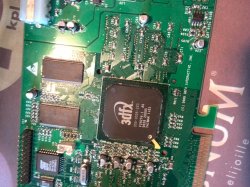

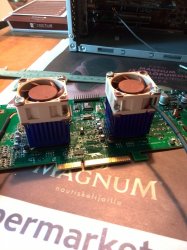
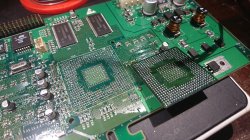
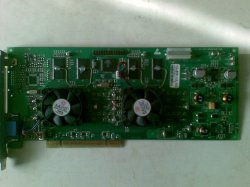

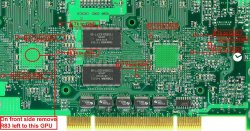
 laitoit kuitenkin uuden VSA:n varmaan kun parit pädit uupu sieltäkin.
laitoit kuitenkin uuden VSA:n varmaan kun parit pädit uupu sieltäkin.